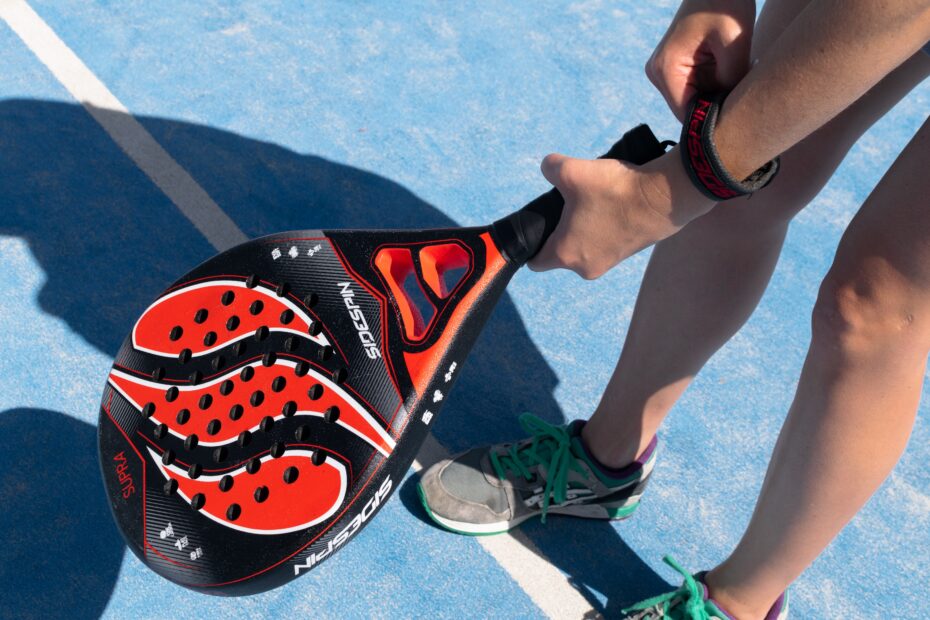You may have noticed the explosive growth of Padel Tennis, a Spanish born racket sport famous for its combination of aspects from Tennis and Squash (and to a certain point hand tennis), movement-based play, and its outrageously fun wall-bouncing mayhem, all coming together to give us a welcome addition to the racket sport world. But there’s more to this closed court craze than meets the eye.
Now, we’ve already covered Padel (and Pickleball) in another article, but the scope of this one far exceeds that in terms of depth. In this article, we’ll give you a comprehensive introduction to the sport, including its history, rules, equipment, court, all rounded out with some tips to set you on your way to mastering the enclosed court sport. Whether you’re a total beginner, a confused onlooker, or a padel pro, we’re here to give you with some valuable knowledge you’ll need for your journey.
An Introduction to Padel Tennis
Padel Tennis is a highly dynamic, rapidly growing racket sport, characterised by its closed court, fast-paced gameplay, strategic shot placement, and even its social atmosphere. Through these aspects Padel has found itself with a sizeable, diverse player-base, which seems to just grow and grow. In fact, Padel courts in England are projected to reach ~400 in Great Britain by 2023, a more than fourfold increase from 2020 (at 90).
But how did the sport come to be?
Originally developed in Mexico, 1969, by Enrique Corcuera, Padel Tennis quickly gained popularity in surrounding Latin American nations and Spain. The creator is said to have been heavily inspired by Tennis, Racketball (or Racquetball), and Hand Tennis (Fives). With this, the sport initially took place on a full concrete court, which eventually developed into the beautiful, purpose-built glass/ mesh wall and synthetic grass combo we all know today. With it’s similarities and fusion of popular racket sports, it’s no surprise it soon found a global audience.
But what really makes Padel Tennis unique, is its court design. Courts are smaller than traditional tennis courts with metal or glass enclosures. The walls are part of the court and game boundaries, meaning that a ball can bounce against them and still be in play, which is a major part of Padel Tennis and its strategy. Players must bounce the ball on the ground before hitting the wall, but we’ll get more into the rules throughout. We’ll also go further into the design of the court later in this guide.
Rules, Regulations, and Scoring
For any sport it’s vital to understand the rules and scoring system, Padel Tennis is certainly no exception. While the sport certainly enjoys its fair share of similarities to the scoring and rule structure of Tennis, it has a clear, unique set of rules. This section will break down the rules and scoring systems in place to make the sport both fair and enjoyable, but don’t worry, we’ll keep it as simple as possible!
Scoring System
The game employs an identical scoring system than tennis, making it an easy switch between the sports, and even easier to remember. But, if you’re not familiar with the scoring of Tennis, here’s the rundown; Players earn points within each game, starting from 0 aka “love”, followed by 15,30, and 40. Advantage signifies that you will win given a score on the next point, deuce indicates a tie before advantage.
To win a set, players must win a given number of games, determined by the rules of the event, or match. Typically, there are six games in a set, with a required advantage of two games to win.
A match is usually the best of three sets, won as mentioned previously, but again this can vary depending on the vent or match rules.
Serving
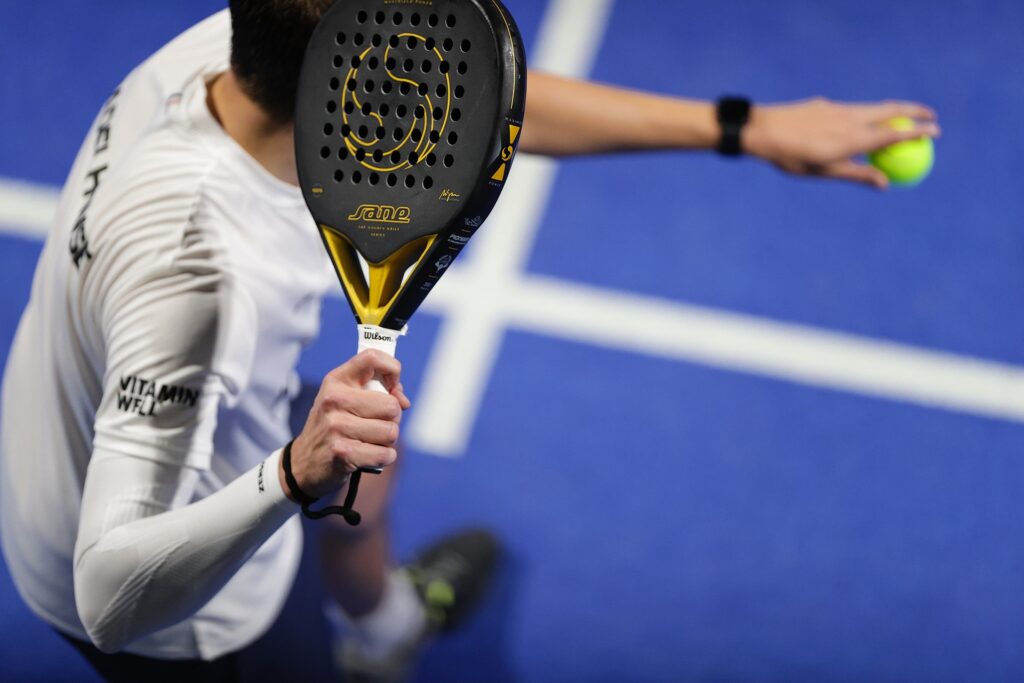
Padel Serve
Serving is at the heart of any racket sport, and like any other, Padel Tennis has its own rules and regulations governing the type of serves players are able to make. Players must serve underhand and hit the ball while it is below waist height, to ensure a fair chance for the opponent to return, given the compact court.
Faults and Let Calls
Faults occur when the serving player fails to execute their serve properly, to properly enforce the serving system in place. Common faults include serving while the ball is above the waist, hitting outside of the service box, or serving overhand.
Let calls typically occur when play is interrupted by unexpected circumstances, in which penalising a team or individual would be unfair. This may include the ball striking the net before landing in the correct service box, which would lead to a replay of that point from the server.
Double Bounce
While quite simple, the double bounce rule is an absolutely fundamental aspect of Padel Tennis. The rule itself states that after the serve, each team must allow the ball to bounce once before they’re able to return it.
The “No Volley Zone”/ “Kitchen”
Padel Tennis courts include a designated “No volley zone”, which some may also know as a “Kitchen”. This zone is found seven to nine feet from the net on each side of the court. This zone designates an area in which players are not allowed to hit volleys (which is a shot made before the ball bounces). However, if the ball has bounced, players can make shots within the zone. It may take you a little while to get used to this on such a small court, but I assure you, you’ll master it in no time with practice and awareness.
Ball and Wall Interactions
Walls are a massive part in what makes Padel so fun and unique. But there are quite a few rules regarding ball-wall interactions, and these differ depending on the phase of play and context. For the scope of this article, here are a few:
- Ball In Play – When the ball hits any part of the walls surrounding the court during a rally, it remains in play.
- Scoring Zones on Walls – Padel Tennis courts often have designated scoring zones located on the walls behind the baseline on each side.
- Hitting the Wall Before Bouncing – Players are allowed to hit the ball against the wall directly without letting it bounce. However, there are specific restrictions. You can only execute a wall shot after the ball has crossed the net and before it bounces for the first time.
- Ball Hitting the Wall During the Serve – During the serve, if the ball hits the wall before crossing the net, it is considered a fault. The serving team loses the point, and they get a second serve opportunity. However, if the ball hits the wall after crossing the net but before bouncing in the service box, it is still considered a valid serve.
Padel Tennis Equipment
Equipment, an absolute imperative in the world of sports. Equipment can be the deciding factor between an enjoyable match, and an uncomfortable task, therefore it’s no surprise it’s in this guide, and such an important subject for players. While we may make some generalised suggestions of gear to use, it’s vital that you choose what you feel is right for you, what fits your own specific needs, and what is most comfortable.
Padel Rackets
First off, Padel Rackets. Also known as bats, they’re specifically designed for the sport, so any old racket from won’t do! In terms of tennis rackets, they differ in terms of weight, shape, and materials. But most notably, the striking surface of a padel racket is solid, often made of a lightweight composite material such as Carbon Fibre or Plastic.
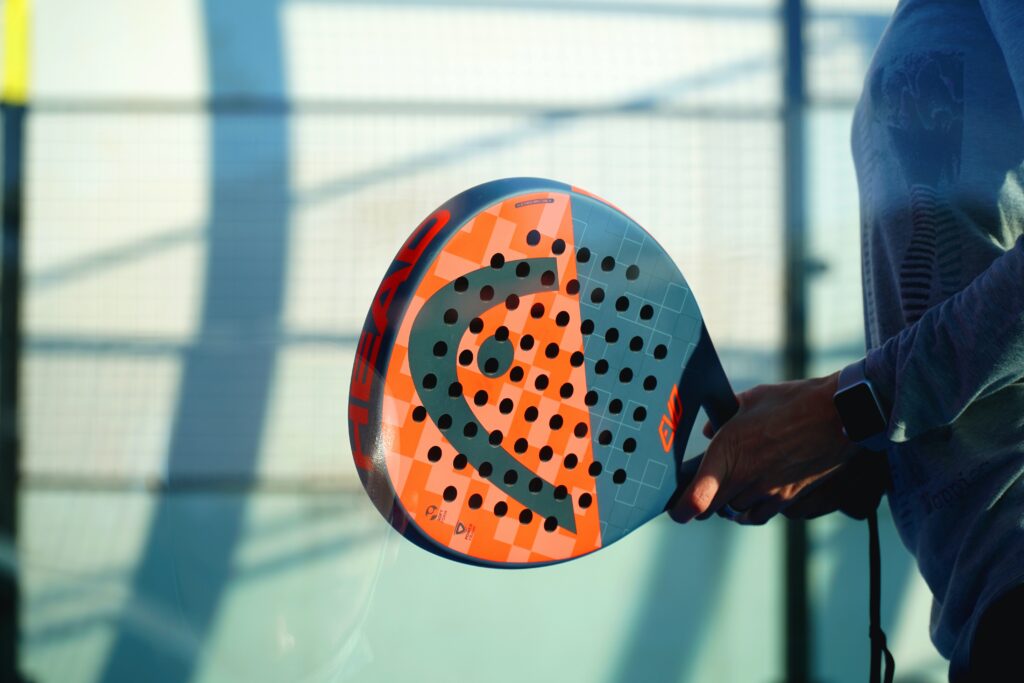
Padel Racket
Now you know what a Padel racket is, you’re going to want to choose one, right? When choosing your own, look out for:
- Weight – Rackets come in various weights. Light, heavy, you name it. Lighter rackets are selected as they offer more manoeuvrability and control, while heavier rackets are chosen for their increased striking power.
- Balance – Weight distribution is also a key factor, leading to the balance of the racket. Rackets can be head heavy, handle heavy, or evenly balanced. Each of these with their own benefits, and more importantly feeling.
- Grip Size – The gripe size of a racket should ensure that you’re not straining any of your forearm muscles in an attempt to keep a tight hold of your racket. You want a grip size that ensures comfort, and as little strain as possible when tightly gripping your racket.
As with everything, it’s preference. There is no one-size fits all here. I recommend that you go ahead and find an outlet to get hands on while making your Padel racket choice. Look out for the factors I mentioned here, to make an informed decision on what most makes sense for you!
Padel Balls
These are purpose made for the sport, differing quite seriously from tennis balls in all but appearance. Padel balls are smaller, with a lower compression. The reduced size and lower pressure of Padel balls make them slower, easier to hit, and offer better control for the tight squeeze of a closed court.
While often overlooked, make sure to get a proper, regulated ball. A poor-quality ball can make play unenjoyable, so don’t be lazy!
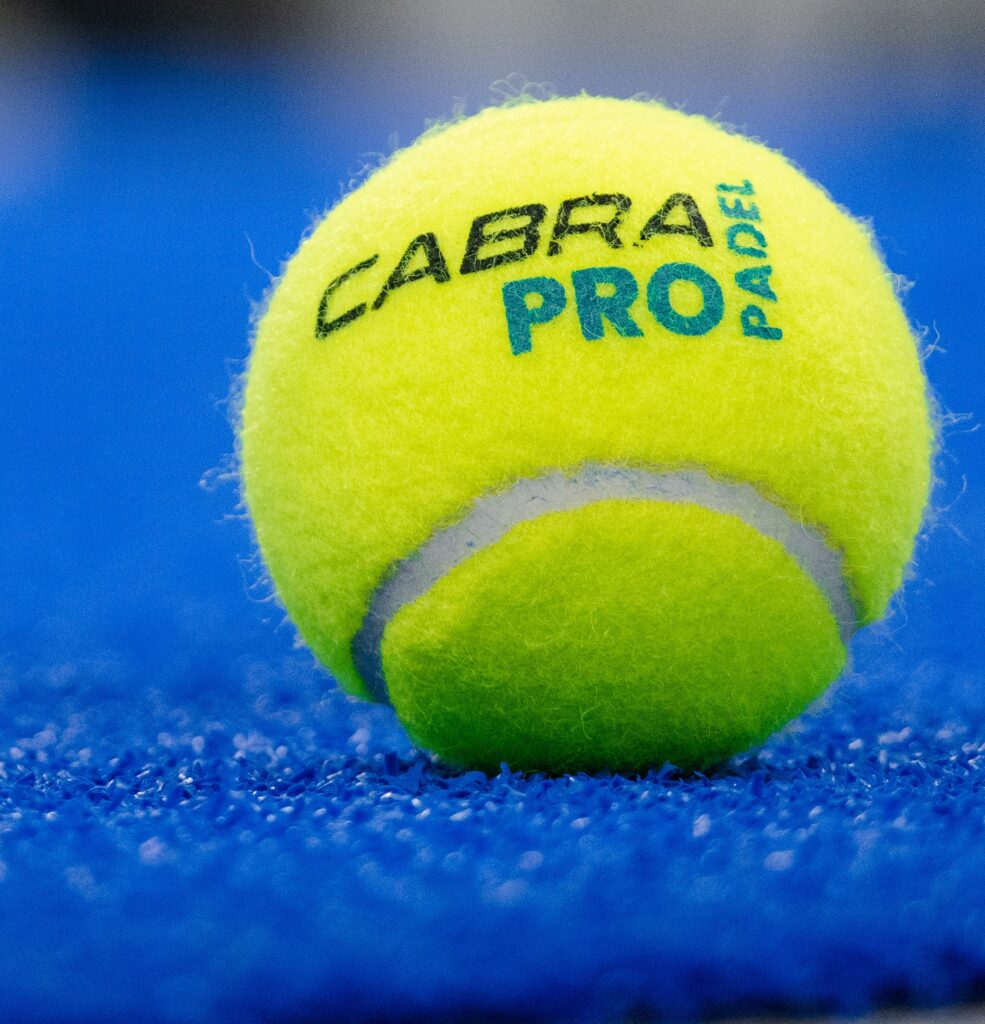
Footwear
You may be thinking, “surely tennis shoes are fine right?”. Well, the common question is actually “Are Tennis shoes fine for Padel?”, and the answer is… yes, and no. While tennis shoes are certainly great in their own right, offering comfort, safety, and precision, they’re just not that effective in a Padel Tennis environment/ court. To put it simply, while they may share some distinct aesthetic similarities, they’re wholly different in terms of design, each made for their own surfaces, and requirements.
Padel Trainers are made to offer suitable traction, stability, and support for quick movements and lateral changes on the court. While style often triumphs all in footwear, it’s important to look out for:
- Traction – You want your trainers to offer excellent grip, on your most used court surface. This is both an advantage, and safety feature.
- Support – The last thing anyone wants is an injury, so it’s important to look for proper support in your trainers. Look for shoes with adequate ankle support and cushioning to protect yourself, but in the same vein, it’s important to ensure that they’re not too restrictive.
- Breathability – Padel is an intense sport. It’s physically demanding and can get heated. Get yourself some breathable shoes. Your socks will thank you. This will keep you cool, comfortable, and clean.
Popular Padel Brands
While Padel certainly share some of its juggernaut brands with Tennis, it’s worth noting that the industry leaders here, may just be a little different. Here are some of our favourite Padel Brands to set you on your way:
- Wilson – A behemoth of the Tennis industry, known for there exquisite quality. Not to mention they’re a friend of Aceify!
- Head – An innovative brand, known for their sports technologies among the Padel Tennis world.
- Babolat – A stalwart brand in the Tennis world, they make some excellent Padel gear.
- Bullpadel – If you’re new to Padel you may not have heard of Bullpadel, but they’re an excellent, Padel only brand. We really recommend you give these guys a look.
Disclaimer: The mention of specific brands is solely for informational purposes and does not imply endorsement or affiliation with these brands. We do not have affiliate links with these brands.
Padel Tennis Courts
Now we all know Padel is super exciting and unique, but the great enabler in all this fun is the court.
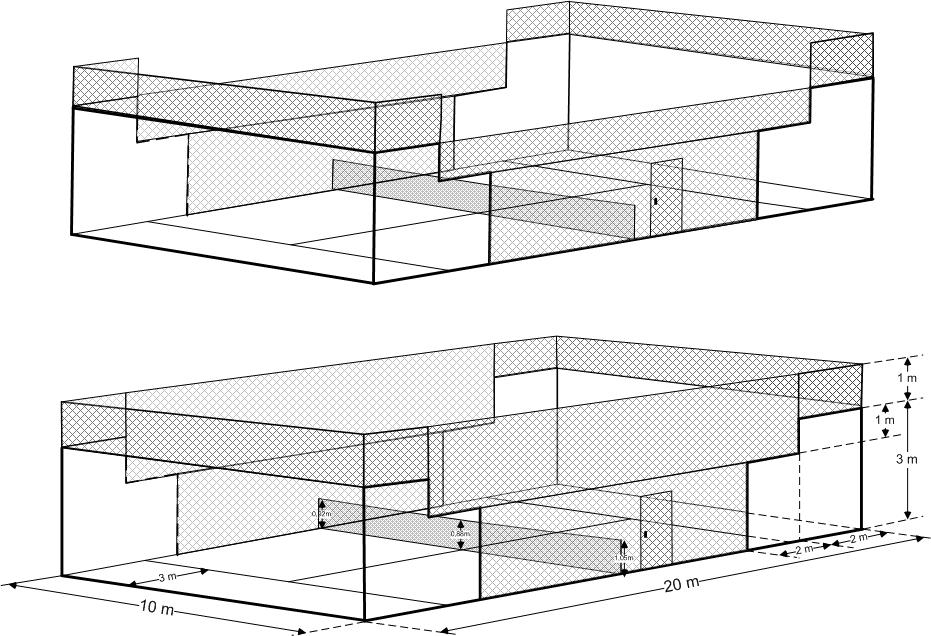
Padel Court Dimensions
Players play the game on special, purpose-built courts. These courts are smaller than their Tennis counterparts, with a length of 20 metres and a width of 10 metres. A net (centre court) divides this court into two-halves, with each of these halves further divided into service boxes, which follow the same rules as Tennis.

One of the distinguishing features of Padel Tennis is the enclosed, walled court. These walls may typically be made of glass or a mesh, but some older courts may feature concrete. Trust us, the walls just make the game so much fun.
Where can I play Padel Tennis?
Now I know what you’re probably thinking, “This all seems amazing, but where can I play Padel Tennis?”. And the truth is, the sport is still growing, and there may not be many courts locally, but there is clear, apparent investment into the game, with more courts coming soon. Actually, the number of courts in Italy grew by 500% in just two years, from 2020 to 2022. Furthermore, LTA aims to increase the number of courts in the UK to ~400 by 2023 .
If you’re looking to find courts in London or beyond, Aceify is here to help. Aceify’s provide a convenient way to discover and book local coaches, Tennis and Padel Tennis courts, connecting you with the perfect place to play and enhance your skills. So, sign up today! find Padel Tennis courts near you and begin your journey today!
Competitions and Events
The significant popularity and growth of Padel Tennis has led to a thriving professional circuit, with many different competitions and leagues worldwide. These competitions are where you can see the best of the best battle it out and compete for glory.
World Padel Tour is the epitome of competitive Padel. Featuring global top-ranked players competing in a series of tournaments throughout the year. The prestigious tour offers both men’s and women’s divisions, highlighting the best players in the world in showcases of high-level skill and athleticism.
Other Competitions Include:
- Padel Pro Tour (PPT) – Formerly one of the main professional circuits, the PPT is an excellent opportunity to witness the world’s best in action.
- International Padel Federation (FIP) – The FIP organize various international competitions annually, bringing the best of the best out to compete for the glory of their nation.
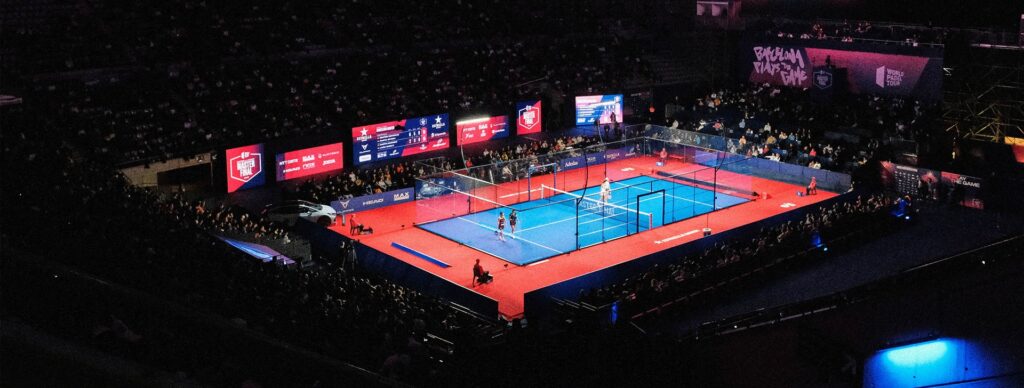
How to Play (and Improve At) Padel Tennis
Now you have a good understanding of what Padel Tennis is, lets dive into the fundamental mechanics, strategies, and techniques of the game. But just remember like any sport, mastering the basics is what will truly make you great, and that will take time, so have fun!
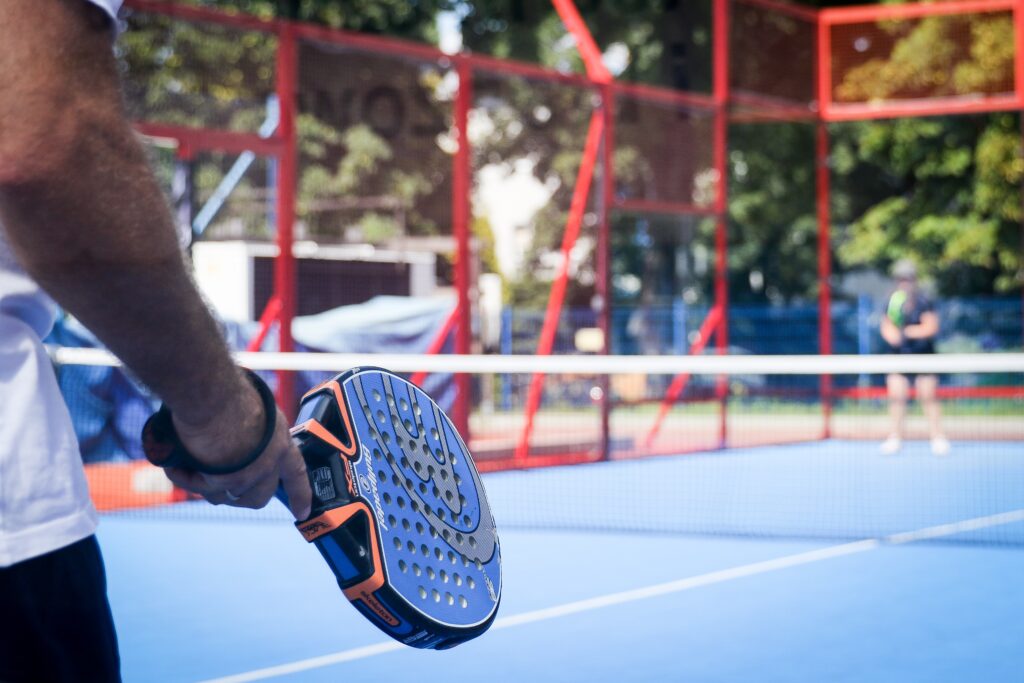
Basic Shots and Techniques
- Forehand – The forehand shot is one of the most common strokes in padel tennis. It involves swinging the racket from the dominant side across the body to hit the ball.
- Backhand – The backhand shot is executed using the non-dominant side of the body. It requires proper grip and body rotation for accurate and controlled shots.
- Volleys – Volleys are shots hit before the ball bounces. Mastering volleys allows for quick and decisive responses at the net.
Movement
- Footwork – Good footwork is essential in padel tennis to position yourself for shots effectively. Master lateral steps, split steps, and quick direction changes to cover the court efficiently.
- Court Positioning – Proper court positioning allows you to anticipate and respond to shots effectively. Understand the strategic positions on the court and adjust accordingly.
Net Play and Volleys
- Net play is a crucial aspect of padel tennis. Develop your skills at the net by practicing volleys and understanding the importance of positioning, anticipation, and shot selection.
How to Improve at Padel Tennis
Sports are hard and take a long time to master. Padel Tennis is no exception to this, but there are key tenets to keep in mind throughout your journey to speed up your progress. But remember that consistency, patience, and dedication reign above all.
- Practice Regularly – Set aside dedicated practice sessions to refine your techniques, footwork, and court coverage.
- Seek Coaching – Working with a qualified Padel Tennis coach can provide valuable insights, personalized feedback, and targeted training programs.
- Play with Different Partners – Playing with a variety of partners exposes you to different playing styles and challenges, helping you adapt and develop your own strategies.
Frequently Asked Questions (FAQ)
What is Padel Tennis?
Padel Tennis is a highly dynamic, rapidly growing racket sport, characterised by its closed court, fast-paced gameplay, strategic shot placement, and even its social atmosphere
Is Padel easier than tennis?
Padel tennis is perceived more accessible for beginners due to the smaller court. However, like any sport, mastery requires practice and skill development.
What is the difference between paddle tennis and padel tennis?
Paddle Tennis and Padel Tennis are two distinct sports with different rules, court dimensions, and equipment. Paddle Tennis is played on a traditional Tennis court with solid paddles, while Padel Tennis is played on a smaller court with perforated rackets.
Can I use Tennis shoes for Padel?
Yes, and no… While tennis shoes are certainly great in their own right, offering comfort, safety, and precision, they’re just not as effective in a Padel Tennis environment/ court. Look for shoes specifically designed for padel or indoor court sports.
How do you pronounce Padel Tennis?
Padel is pronounced as “Pah-dell.”
Is Padel Tennis in the Olympics?
As of the time of writing, Padel Tennis is not an Olympic sport. However, it is actively played and recognized at both amateur and professional levels worldwide.
Summary
So, there you have it! Padel Tennis is an incredible, exciting, and growing sport that all ages and skill levels are sure to enjoy. It’s really no surprise how popular it’s becoming when you really engage with what makes the sport unique. Whether you’re new or experience to the world of Padel, I really hope you’ve found this guide useful. Remember to have fun, keep practicing, enjoy the journey, and that Aceify is here for you!

